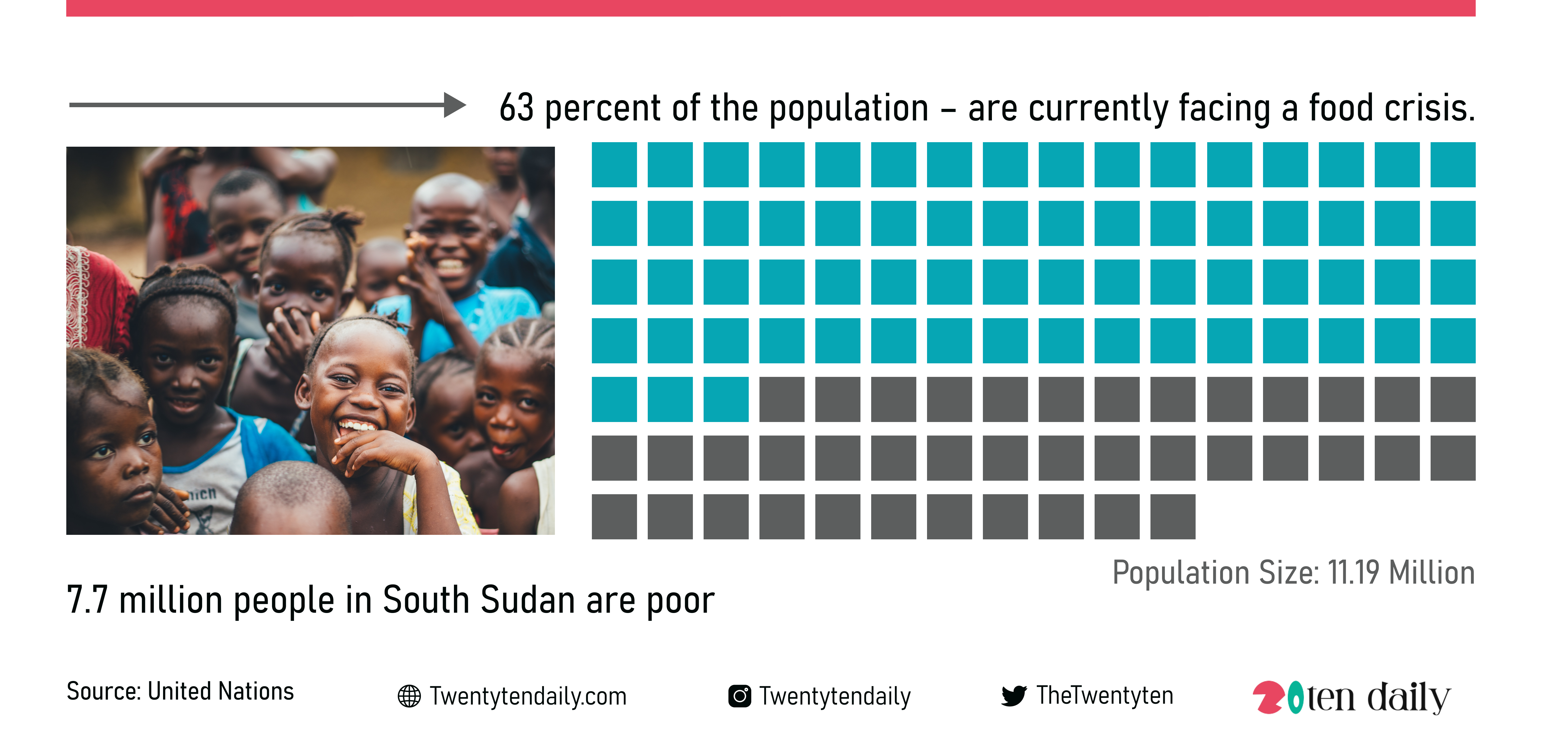What Is Driving The Worsening Food Crisis In South Sudan
A new report by the United Nations revealed that up to 7.7 million people in South Sudan – some 63 percent of the population – are currently facing a food crisis.
Since its independence in 2011, the oil-rich state has suffered instability, driven by extreme weather conditions, and internal armed conflict. Now the UN’s reports share that the continued violence in the country is driving up the number of internally displaced persons, leading to an increase in food insecurity.

“Until the conflict is addressed, we will continue to see these numbers increase because what it means is that people do not have safe access to their lands to cultivate,” said Adeyinka Badejo, World Food Programme acting country director in South Sudan.
“We appeal to the leaders of the country to continue towards the path of peace.”
The states in South Sudan with the most populations affected by the worsening food crisis are Jonglei, Upper Nile, Warrap, and Eastern Equatorial, according to a joint UN and government report.
In response to the UN’s report, President Salva Kiir and his vice president, Riek Machar, have agreed to resume talks on integrating their rival forces under a unified command after weeks of escalating conflict. This move could hopefully be the starting point for the much-needed peace South Sudan needs.



